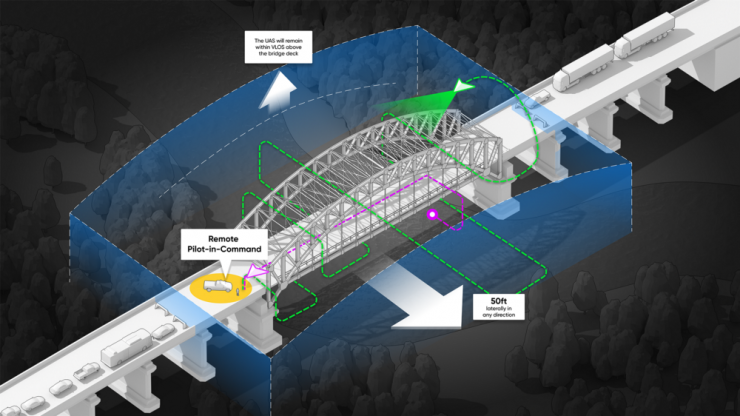The Federal Aviation Administration (FAA) has approved a waiver that enables North Carolina Department of Transportation (NCDOT) to conduct beyond visual line of sight (BVLOS) operations using autonomous drones supplied by Skydio to carry out bridge inspections.
According to an NCDOT press release, the announcement makes NCDOT the first state transportation agency to have been awarded such a waiver, paving the way for other states to fully use drones in bridge and infrastructure inspections.
The waiver application was developed in part with Skydio, the largest U.S.-based drone maker. Skydio drones are powered by on-board artificial intelligence that enables each craft to avoid obstacles in complex areas that lack a reliable GPS signal, such as the trusses beneath bridges.
Ben Spain, the NCDOT’s UAS program manager, said drones have been used since 2016 to conduct bridge inspections. But by enabling the drones to move beyond the pilot’s line of sight, the inspections will be able to collect more high-resolution images in difficult to see places so inspectors can better analyze the bridge’s integrity and identify possible problems.
According to a Skydio press release, the achievement follows months of collaboration between Skydio, NCDOT, and the FAA. Going forward, NCDOT’s inspectors — who face the daunting task of inspecting more than 13,500 bridges on a regular basis — can send drones below bridges instead of dangerous rappels or expensive and invasive snooper trucks.
While the waiver applies to NCDOT, Skydio believes it signals the FAA’s willingness to permit advanced BVLOS operations within procedural parameters that account for lower levels of airspace risk near structures, a concept known as infrastructure masking.
Summary of the key features of the waiver
- Allows NCDOT to conduct BVLOS operations below the decks of bridges, within 50 lateral feet of the bridge itself, and all the way down to the ground, while remaining within 1,500 feet laterally of the remote pilot.
- Does not require VOs or ground- or air-based surveillance capability because the operations take place in airspace where manned aircraft are unlikely to enter.
- Allows for operations within 2–3 miles of airports or helipads provided a NOTAM is obtained; operations within a mile of airports/helipads are not permitted at this time.
- Requires NCDOT to take appropriate measures to ensure that non-participants are not located on or below the bridge deck during the course of operations.
For more information visit:




